|
|
|
Sort Order |
|
|
|
Items / Page
|
|
|
|
|
|
|
| Srl | Item |
| 1 |
ID:
193006
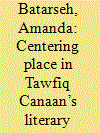

|
|
|
|
|
| Summary/Abstract |
In the early-twentieth century, Palestinian physician and ethnographer Tawfiq Canaan published roughly forty-five studies on the cultural and narrative traditions of the largest section of Palestinian society, the fellaheen (peasantry). In this article, the author examines how Canaan’s expansive collection of stories related to holy sites across Palestine in Mohammedan Saints and Sanctuaries in Palestine (1927) produces a provocative literary cartography—a narrative that operates much like a map. In so doing, she contends that Canaan both contests orientalist constructions of the Holy Land as frozen in biblical time and, critically, unsettles the very spatiotemporal logic governing dominant colonial narrations of place. This epistemic shift, the author concludes, is the result of Canaan’s recentering of Indigenous Palestinian place-based knowledge as both the subject and method of his study. This approach offers instructive lessons applicable within and beyond the disciplinary, regional, and temporal boundaries that have so far circumscribed the study and reception of Canaan’s work.
|
|
|
|
|
|
|
|
|
|
|
|
|
|
|
|
| 2 |
ID:
088123
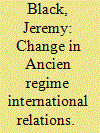

|
|
|
|
|
| Publication |
2009.
|
| Summary/Abstract |
Mapping became an important element in the mechanics of European diplomacy in the century and one-half after the Peace of Westphalia. This element was linked to what has been seen as a more defined notion of frontiers, a move away from the idea of a frontier as a zone to, instead, the idea of a distinct border that could be reproduced and charted on a map as a line. This change reflected a greater stress on undivided sovereignty, which made ambiguous relationships, such as that between France and ten Alsatian cities established by the Peace of Westphalia of 1648, unacceptable to some rulers. However, traditional ideas proved to be very persistent and mapping often served simply to clarify the existence of incompatible notions and disputed territories.
|
|
|
|
|
|
|
|
|
|
|
|
|
|
|
|
| 3 |
ID:
175072
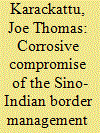

|
|
|
|
|
| Summary/Abstract |
India and China have entered a new low in their bilateral relations. Having fought a war in 1962, it took over three decades for both countries to achieve normalcy at the borders, aided by a series of border management agreements and protocols to maintain tranquility along the border areas. However, the June 2020 Galwan clashes have changed that permanently. This paper argues that the current escalation of border clashes is both a symptom and consequence of the breakdown of the bilateral border management framework which has been dented since the 2017 Doklam standoff between both countries. Delving into diplomatic history relating to Doklam and Galwan, the findings point to the need to correct the epistemic criteria used to reproduce claims of an unambiguous boundary between India and China by both countries, in order to ensure abatement of similar outcomes.
|
|
|
|
|
|
|
|
|
|
|
|
|
|
|
|
| 4 |
ID:
122906
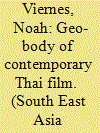

|
|
|
|
|
| Publication |
2013.
|
| Summary/Abstract |
Contemporary Thai films such as Salween (Chatrichalerm Yukol, 1995), Handle Me With Care (Kongdej Jaturanrasamee, 2008) and Mysterious Object at Noon (Apichatpong Weerasethakul, 2000) emphasize connections between geographical space and national belonging in unconventional ways. By employing new creative techniques to present continuing political conflicts in the region, these films lay claim to a visual tradition of territorial recognition. This article interprets this recent cinematic direction as a continuation of Thongchai Winichakul's critique of the 'geo-body'. The geo-body, a conceptual framing that links seeing subjects with visual representations, enables the imagination of national space by mapping bodies. This article shows how the aesthetic techniques of film reorient the imagination of national space through a reconfiguration of the geo-body of film.
|
|
|
|
|
|
|
|
|
|
|
|
|
|
|
|
| 5 |
ID:
039807
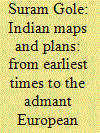

|
|
|
|
|
| Publication |
New Delhi, Manohar Publications, 1989.
|
| Description |
206p
|
| Standard Number |
81-85054-58-4
|
|
|
|
|
|
|
|
|
|
|
|
Copies: C:1/I:0,R:0,Q:0
Circulation
| Accession# | Call# | Current Location | Status | Policy | Location |
| 031094 | 912.19954/DDC-20 031094 | Main | Withdrawn | General | |
|
|
|
|
| 6 |
ID:
078774
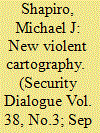

|
|
|
|
|
| Publication |
2007.
|
| Summary/Abstract |
Mapping the `new violent cartography', an inter-articulation of geographic imaginaries and antagonisms, based on models of identity-difference, this article begins with the analysis of a piece of photo-journalism, an image of a US soldier in a bombed-out bunker during the war in Afghanistan, and goes on to trace the institutions that are part of the contemporary aspects of militarization and securitization constituting the `war on terror'. The article ends with an analysis of the anti-war impetus of cinema and the cinematic spaces of film festivals
|
|
|
|
|
|
|
|
|
|
|
|
|
|
|
|
| 7 |
ID:
113784
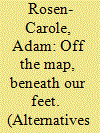

|
|
|
|
|
| Publication |
2012.
|
| Summary/Abstract |
The imaginary consolidation of America as a sovereign nation-state situated on a state-centric international topography was and remains predicated on spatializing practices bound up with the ongoing eradication of indigenous people(s) and simultaneous effacement, or at least repression, of the violence of the (neo)colonial encounter. The American nation-state is founded on the all-but-forgotten bodies and worlds of indigenous peoples and is continually secured by a narrative constellation that reduces the decimation of people(s) to a clearing of space on which a sovereign nation could be constructed or within which it could evolve. This article will trace the various techniques of decimating indigenous cultures and bodies that facilitate efforts of nationalist historiography that reduce indigenous cartographies to mere space situated within a narrative trajectory of American national unification.
|
|
|
|
|
|
|
|
|
|
|
|
|
|
|
|
| 8 |
ID:
154554
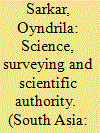

|
|
|
|
|
| Summary/Abstract |
This article traces the journeys of and controversies surrounding the Schlagintweit brothers in ‘India and High Asia’. The brothers were Alpine glaciologists from Germany who were invited by the East India Company in 1854 to complete the Magnetic Survey of the Indian subcontinent on the recommendation of Alexander von Humboldt. This article discusses how the Schlagintweit brothers became the subject of controversy, and how they vanished from the record of the history of surveying as abruptly as they had emerged. Their story calls into question established historiographical narratives about ‘colonial science’ and ‘Western science’ in the subcontinent.
|
|
|
|
|
|
|
|
|
|
|
|
|
|
|
|
| 9 |
ID:
141773
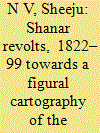

|
|
|
|
|
| Summary/Abstract |
This article focuses on the Shanar revolts, a series of subaltern uprisings in nineteenth-century South Travancore, for the right to wear upper clothes over the bosoms of Shanar women. In the parlance of official accounts and modern histories, these revolts are mere disturbances or controversies and the subaltern rebels in these struggles were always pretenders. Contrary to this, an attempt is made here to document and explicate the becoming of the pretender and to demonstrate that historiography may well be implicated, all too easily, in generating the very precarity of the pretender by opposing any movement towards reform.
|
|
|
|
|
|
|
|
|
|
|
|
|
|
|
|
|
|
|
|
|